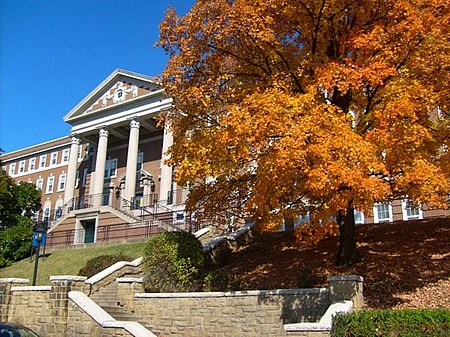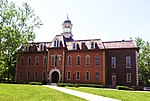Stalnaker Hall
Mountaineer Country Registered Historic Place stubsNational Register of Historic Places in Monongalia County, West VirginiaNeoclassical architecture in West VirginiaResidential buildings completed in 1918Residential buildings on the National Register of Historic Places in West Virginia ... and 3 more
University and college buildings on the National Register of Historic Places in West VirginiaUniversity and college residential buildings in West VirginiaWest Virginia University campus

Stalnaker Hall, also known as Woman's Hall, is a historic dormitory building associated with the West Virginia University, located in Morgantown, Monongalia County, West Virginia. Constructed in 1918, it is a three-story, brick building on a high basement, with Classical Revival detailing. Two-story additions were built between 1935 and 1939. The front facade features four Corinthian order columns that support a pediment with decorative concrete work. It was named for Elizabeth Stalnaker, professor of philosophy and psychology in the early 20th century.It was listed on the National Register of Historic Places in 1985.
Excerpt from the Wikipedia article Stalnaker Hall (License: CC BY-SA 3.0, Authors, Images).Stalnaker Hall
Valencia Court,
Geographical coordinates (GPS) Address Website Nearby Places Show on map
Geographical coordinates (GPS)
| Latitude | Longitude |
|---|---|
| N 39.635555555556 ° | E -79.953055555556 ° |
Address
West Virginia University
Valencia Court
26505
West Virginia, United States
Open on Google Maps








